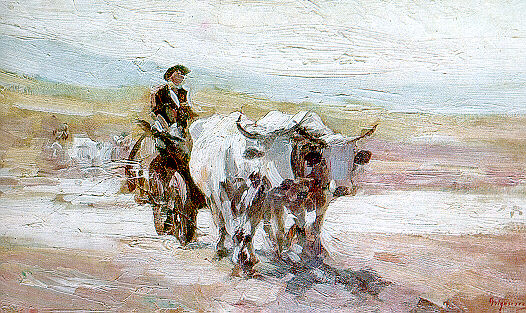#romanian_art

Romanian art
Romanian art consists of the visual and plastic arts originating from the geographical area of Romania. The production of art in Romania is as old as the Paleolithic, an example being a cave painting from the Cuciulat Cave. During the Neolithic, multiple cultures lived on the modern territory of Romania. Their material culture included pottery and abstract clay statuettes decorated with geometric patterns. These may give hints on the way these civilizations used to dress and maybe tattoo. A good examples of this is the Thinker of Hamangia, a clay figurine produced by the Hamangia culture. Important cultures of the Neolithic era include Starčevo–Körös–Criș, Boian, Gumelnița–Karanovo, and other ones, the most famous and at the same time the most evolved among them in art being the Cucuteni–Trypillia culture. During Antiquity, the Geto-Dacians produced art and built multiple cities of the dava type. Greek colonies appear in Dobruja, including Tomis, and Mangalia. After the Dacian Wars, Emperor Trajan transformed a big part of Dacia into a province of the Roman Empire. The province underwent an intense process of Romanization.
Sat 10th
Provided by Wikipedia
This keyword could refer to multiple things. Here are some suggestions: